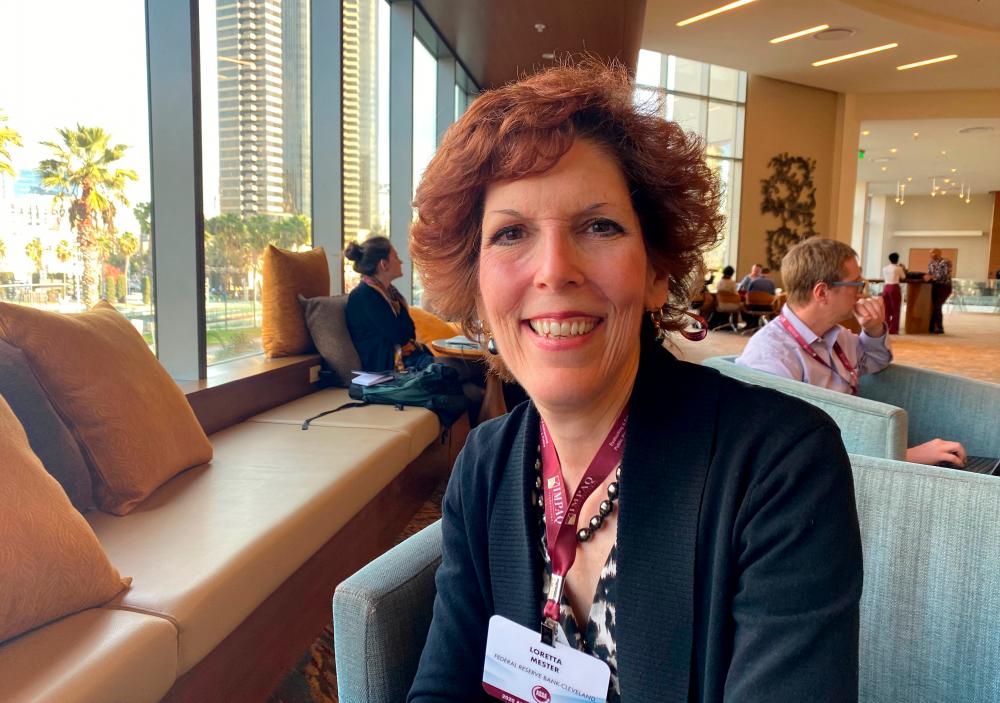WASHINGTON: US central bankers are preparing for their last policy-setting meeting of the year by diving deep into inflation data for signals on whether they have pushed interest rates high enough.
The evidence, to many of them, is that they probably have.
“Monetary policy is in a good place for policymakers to assess incoming information on the economy and financial conditions, Cleveland Fed president Loretta Mester said on Wednesday (Nov 29).
One of the Fed’s more reliably hawkish voices, Mester has said for months she feels one more rate hike would likely be needed by year end to get inflation on track for the Fed’s 2% target. Notably, Wednesday's speech did not contain that line.
The Fed has kept its policy rate unchanged in the 5.25%-5.50% range since July, and after the last meeting over Oct 31-Nov 1, Fed chair Jerome Powell said he is not yet confident policy is restrictive enough.
Fed governor Christopher Waller, a policy hawk like Mester, on Tuesday delivered a similar assessment. “I am increasingly confident that policy is currently well positioned to slow the economy and get inflation back to 2%,” he said.
One reason for their confidence: wage pressures have eased, with average hourly earnings growing just 3.2% in recent months. That moderation, from 4.1% previously, should help slow inflation in the labour-intensive service industries, Waller said on Tuesday. Another reason: falling rents are expected to drive down housing services inflation.
Indeed, Waller said, if the inflation decline continues for several more months, rate cuts could be in order to keep policy from becoming overly tight.
That said, neither Waller nor Mester say they feel the verdict on inflation is fully in. Both say they'll be watching the data closely and that rates may yet need to rise.
And some of their colleagues are more sceptical.
“I’m still in the ‘looking to be convinced’ category, rather than the ‘convinced’ category,” Richmond Fed president Thomas Barkin said on Wednesday, on whether inflation is on a firmly downward path, adding that he wants to retain the option of doing more on rates if inflation flares back up.
Strong economic growth will continue to encourage businesses to try to raise prices, Barkin said at a CNBC CFO Council event. Polled after his talk, a majority of the audience said that's exactly what they planned to do next year; none said they planned to cut prices.
Policymakers will get a fresh read on inflation on Thursday, with the publication of the October personal consumption expenditures price index.
Economists polled by Reuters estimate it rose 3% from a year earlier, down from 3.4% reported in September. Inflation peaked at 7.1% in June 2022.
Atlanta Fed president Raphael Bostic, who has for months said the Fed policy rate at 5.25%-5.50% is high enough, said Wednesday he feels data backing that view is getting clearer.
“There’s no question the rate of inflation has slowed materially over the past year-plus, and thus far we have avoided a disruptive surge in unemployment that often accompanies a steep slowdown in price increases,” he said. “At the same time, I don’t think we’ve seen the full effects of restrictive policy, another reason I think we’ll see further cooling of economic activity and inflation.”
Meanwhile, US economic activity has slowed in recent weeks and the labour market has continued to cool, the Fed announced on Wednesday as it continues its fight against stubborn inflation.
The Fed announced earlier this month that it was holding its key lending rate at a 22-year high as it looks to return inflation firmly to the long-term target of 2% without triggering a damaging recession.
Cutting inflation while avoiding a downturn, commonly known as a “soft landing”, is challenging, but the latest update from the US central bank suggests it could be on track.
“On balance, economic activity slowed since the previous report,” the Fed announced in its regular survey of US economic conditions, known as the “Beige Book”.
Four of the Fed’s 12 regional districts reported “modest” growth between early October and mid-November, while two reported flat conditions.
The remaining six noted “slight declines in activity”, the Fed said.
At the same time, “demand for labour continued to ease”, the Fed announced, adding that most districts reported “flat to modest increases in overall employment”.
Retention appears to have improved in many districts, and some reported reductions in headcounts through layoffs or attrition.
Some employers even “felt comfortable letting go low performers”, the Fed announced.
While this would normally be concerning for the US central bank – which has a dual mandate to tackle both inflation and unemployment – it comes at a time when the US unemployment rate remains close to historic lows.
Policymakers at the Fed have indicated they expect that some softening in the labour market will be required in order to get US inflation to come down firmly to its 2% target. – Reuters, AFP









